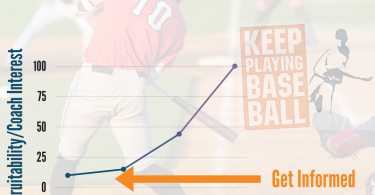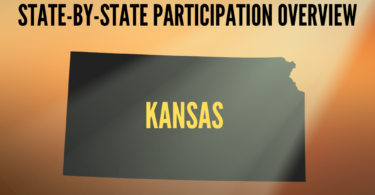Today’s college baseball is more competitive than ever. More relaxed transfer rules, Covid-related eligibility relief, and other changes have made all college roster spots hard to come by, including walk-on opportunities. While scholarship players often steal the recruiting spotlight, walk-on players represent a significant portion of every college baseball roster and are a major key to team success.
If you consume a lot of sports content, then you’ve probably heard stories about walk-on players making the team against all odds and playing a major role in their team’s success. Media loves to hone in on these feel-good “zero-to-hero” stories and people love to hear about them. At KPB, we like these stories, too; but, before you attempt to walk-on at your dream school, we want to help you develop realistic expectations and fully understand what your walk-on opportunity means. In this article, we’ll help you figure out the questions you need to ask and the information you need to get to better understand your odds of making the team and having college success as a walk-on.
Types of Walk-On Opportunities
Blind Walk-On
This is the most storied kind of walk-on (Think Rudy!). A player who has had minimal contact with the coaches and is already enrolled in school, walks up to the field or into the coaches’ office and is given a shot to make the team. This is the most improbable way to make a college baseball team, and players of this type normally get few chances to impress coaches. This is the riskiest type of strategy to make the team.
Recruited Walk-On (no roster spot guarantee)
A recruited walk-on with no guarantee of a roster spot is a player that has had contact with the coaching staff during the recruiting process, there’s mutual interest, but the player is not guaranteed a roster spot. Normally, this student has been admitted to the school either on their own or with support from the baseball team ( You should never plan on getting help from a team to get into a school). Recruited walk-ons who are not guaranteed a roster spot generally receive a prolonged tryout and work out with the team during fall ball, but must either beat out a returning player, win the spot over other players with the same opportunity, or have a spot open up for them through another means. This gives players a prolonged period of time to show what they can do, but is still not guarantee of making the team. This option is better than a blind walk-on opportunity, but still carries quite a bit of risk.
Roster Spot (Preferred) Walk-On
A player who is promised a roster spot but doesn’t receive any scholarship money is often called a preferred walk-on or a roster guaranteed walk-on. While the expectation among all parties is that the player will have a roster spot, the player should know that they will be first on the chopping block when push comes to shove. Preferred walk-ons do not benefit from the added security of having a scholarship invested in them. If a walk-on beats out a returning player, it is often a non-scholarship players who started out as roster spot walk-ons. This type of walk-on opportunity carries the least amount of risk, but as we discuss here, nothing in college baseball is truly guaranteed.
Will You Make the Team?
Everyone considering a walk-on opportunity wants to know their odds of making the team. Unfortunately, it’s impossible to generalize. Each walk-on situation is unique, and that’s what makes it so important for players to ask good questions and have a full understanding of their opportunity before they set foot on campus.
Even though we’ve spent the first part of this article talking about risk, walking on is not always gloom and doom. Because scholarship money in baseball is so limited, college baseball rosters depend on quality walk-ons for the program to stay competitive. Behind every successful program is a group of high achieving walk-on players.
Understanding Your Opportunity
There are many factors that influence a player’s chances of making the team as a walk-on. For starters, every head coach has a different view of the role that walk-on players play and each program provides different walk-on opportunities to fill out it’s roster. For example, walk-on opportunities at a Power 5 D1 program that brings in 65 players during the fall are much different than those at a program that never brings in more than the 35 roster spots allowed in the spring. It’s also safe to assume that the more restrictive a division is with roster limits or the more competitive the program, the more competition there will be among players for walk-on roster spots. Factor in that roster spot availability and team needs change constantly and you begin to see why it’s so critical to ask a lot of direct questions about your specific walk-on situation. Whatever you do, don’t shy away from getting the answers you need to understand your opportunity for making the team and playing.
Questions to Ask When Considering a Walk-On Spot
As you can imagine, there are many questions you should be able to answer before deciding whether to accept a walk-on opportunity at a program of interest. Your college decision is not a time to be shy. Below we share a mix of things to consider for yourself and things to ask the college coach recruiting you.
Personal Considerations
- Are there other baseball playing opportunities available to you that you are interested in?
- If you don’t make the cut, will you be happy as a regular student at that school?
- Are you willing to risk not playing college baseball or transferring later to give walking-on a shot?
- What do you want out of a playing experience if you do make the team?
- Would you be willing to accept a non-playing role for a majority or all of your time as a college baseball player?
Questions to Ask the Coach/Things to Research
- What will your tryout and opportunity to make the team look like?
- What kind of walk-on (see types above) will you be?
- When will cuts and final roster decisions be made?
- How many roster spots are open on the team? (Roster spots can open late when players quit or get drafted after the season.)
- How many other walk-on players are competing for those spots?
- How many returning players are coming back at your position?
- What does the coach think are realistic chances for you to make the team?
- How many roster spot walk-ons have made the team and played?
Final Thoughts
Walk-on decisions are about balancing risk with reward. The risk/reward calculation will be different for every individual and opportunity. The only way you can truly understand the opportunity in front of you and the chances you have of making the team are by asking direct, and sometimes difficult, questions of the coach. The bottom line? Understand exactly what you’re getting into before you set foot on campus and show up prepared to earn everything you get.







